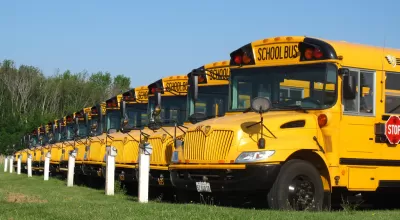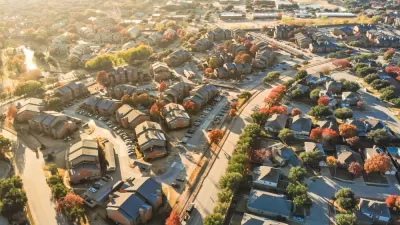Pete Rodrigue pulls from multiple studies, arguing that zoning contributes to an education gap between rich and poor students. Housing costs lie at the heart of the problem.

While zoning may no longer have overtly racist or classist intentions, it can still function that way. Pete Rodrigue makes the case that we see this very clearly in schools. Segregation of housing types perpetuates the segregation of people.
"It works like this: wealthy neighborhoods around the US ban rentals, multifamily housing, and smaller homes through regulations like zoning. This excludes lower-income families by outlawing housing they could afford."
Rodrigue goes on to say that "separate is not equal: because almost half of school funding derives from local sources, poor students are left with less funding relative to student need and less experienced teachers."
Using data from several studies, Rodrigue reports that metro areas with more exclusionary zoning have the widest test score gaps between poor and well-off students. Where zoning is less restrictive, gaps in test scores and housing costs can be drastically reduced. Strategies like housing mobility may help in the short term, but zoning rules eventually need to change.
FULL STORY: How exclusionary zoning limits poor families’ access to good schools

Planetizen Federal Action Tracker
A weekly monitor of how Trump’s orders and actions are impacting planners and planning in America.

Chicago’s Ghost Rails
Just beneath the surface of the modern city lie the remnants of its expansive early 20th-century streetcar system.

San Antonio and Austin are Fusing Into one Massive Megaregion
The region spanning the two central Texas cities is growing fast, posing challenges for local infrastructure and water supplies.

Since Zion's Shuttles Went Electric “The Smog is Gone”
Visitors to Zion National Park can enjoy the canyon via the nation’s first fully electric park shuttle system.

Trump Distributing DOT Safety Funds at 1/10 Rate of Biden
Funds for Safe Streets and other transportation safety and equity programs are being held up by administrative reviews and conflicts with the Trump administration’s priorities.

German Cities Subsidize Taxis for Women Amid Wave of Violence
Free or low-cost taxi rides can help women navigate cities more safely, but critics say the programs don't address the root causes of violence against women.
Urban Design for Planners 1: Software Tools
This six-course series explores essential urban design concepts using open source software and equips planners with the tools they need to participate fully in the urban design process.
Planning for Universal Design
Learn the tools for implementing Universal Design in planning regulations.
planning NEXT
Appalachian Highlands Housing Partners
Mpact (founded as Rail~Volution)
City of Camden Redevelopment Agency
City of Astoria
City of Portland
City of Laramie




























